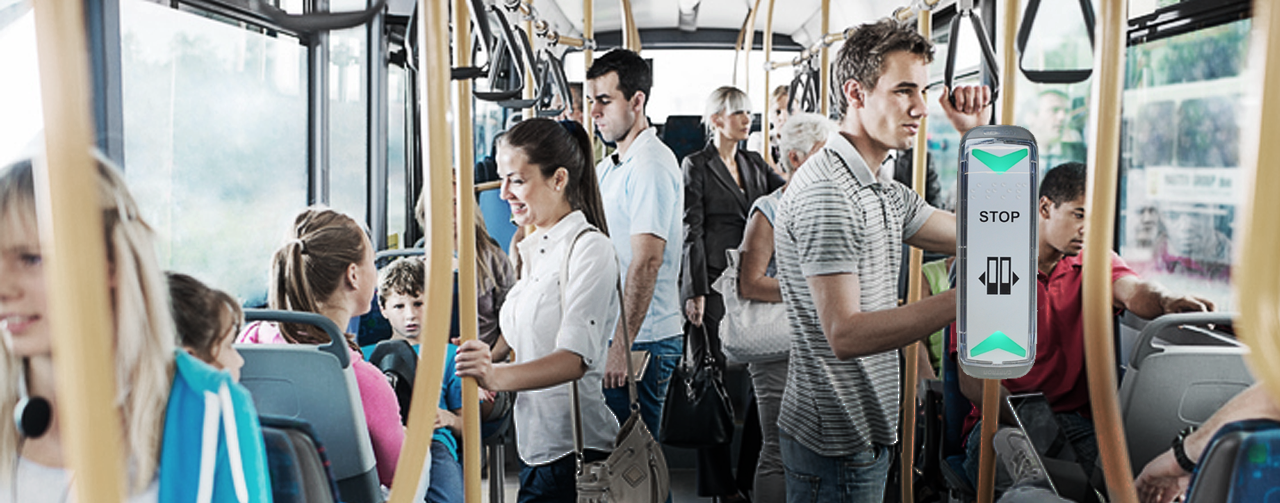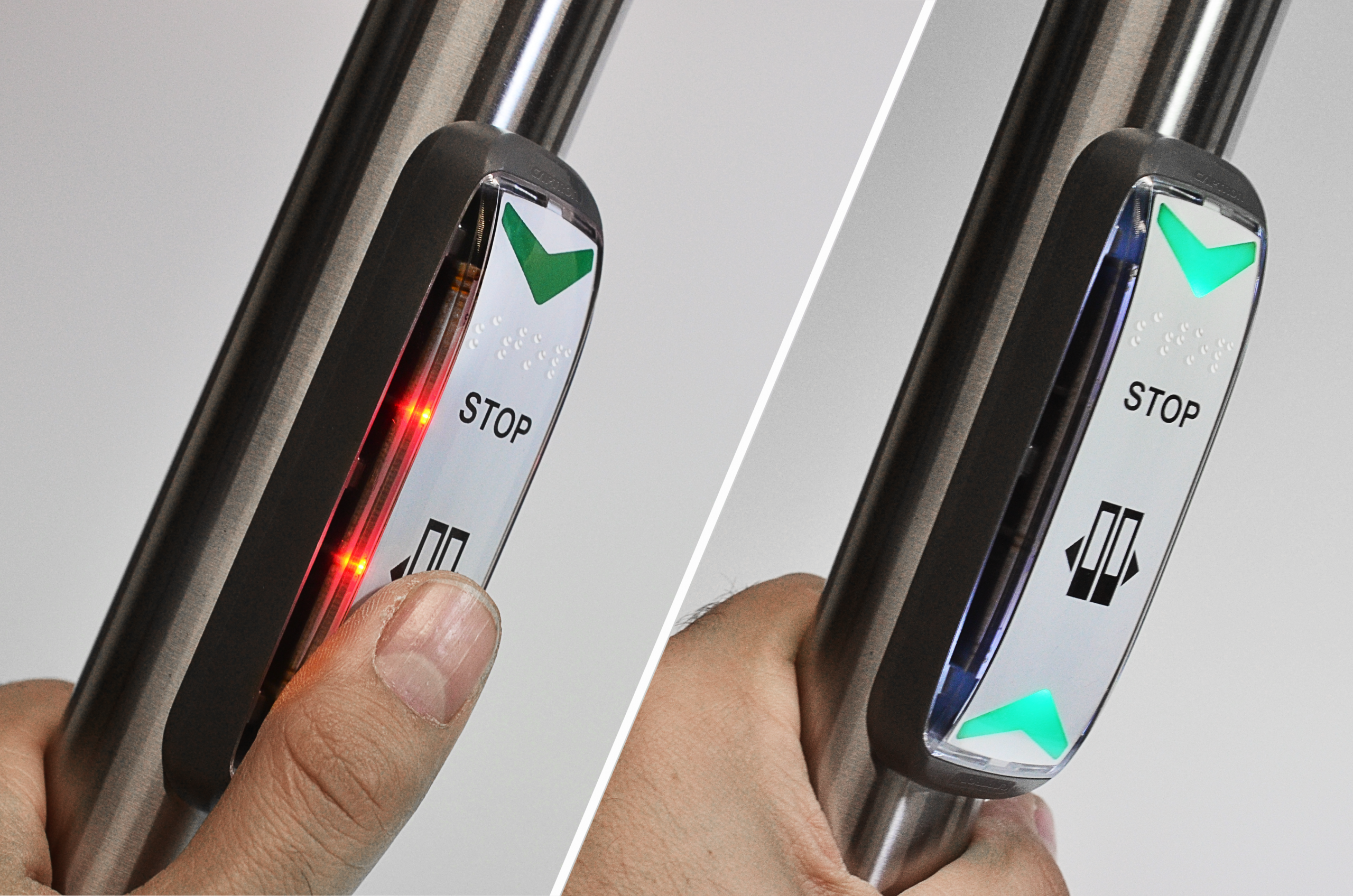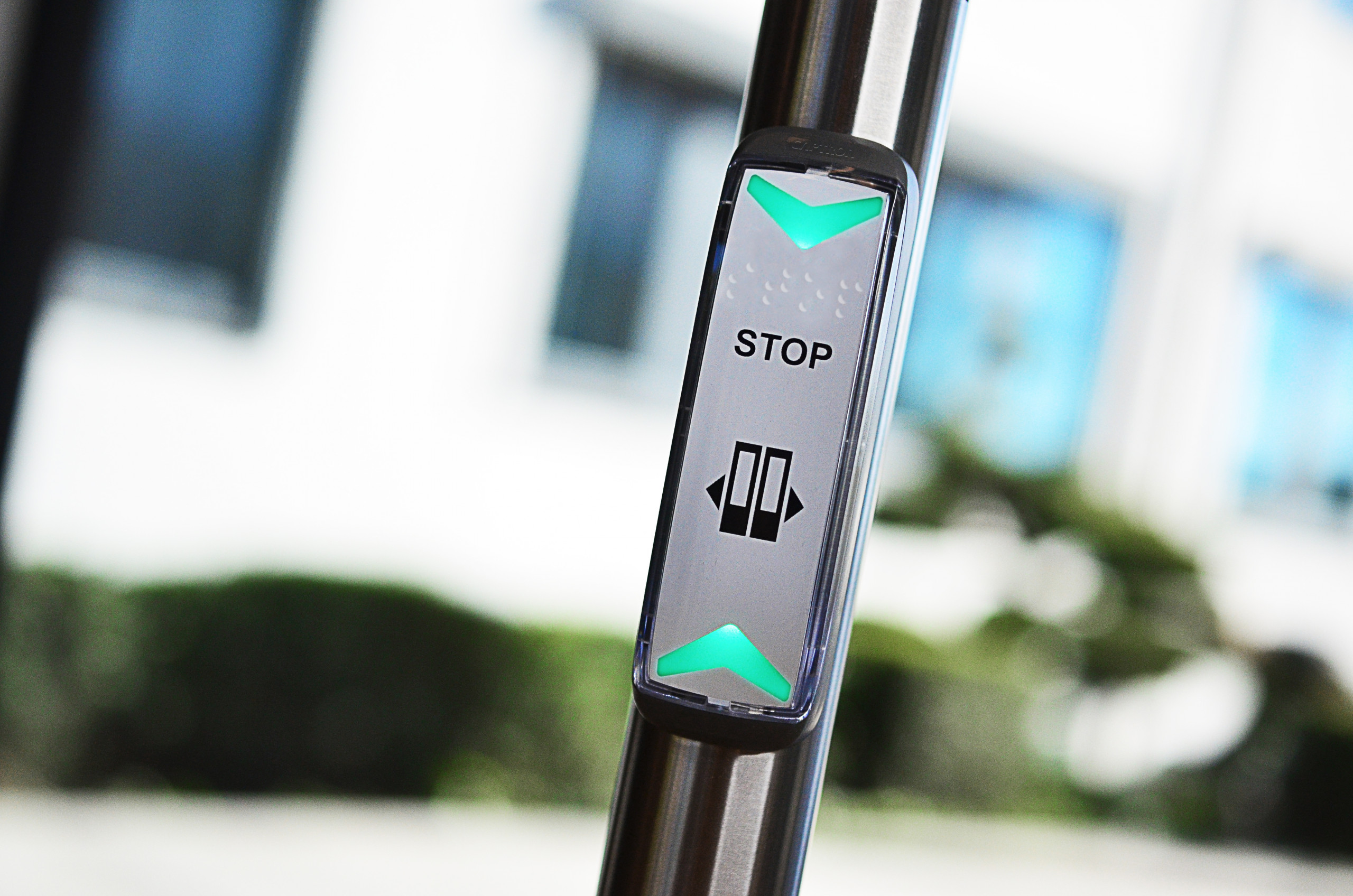Example of stop request button conforming to guidelines with optical and acoustic signal as well as Braille.
- Home /
- Company /
- News & Events /
- Blog
May 23rd, 2023 | 4 minutes read | CAPTRON editorial office
Accessible buses: The interpretation of the UN ECE 107.8 directive
The UN ECE 107 guideline of the United Nations Economic Commission for Europe (UNECE) specifies how buses and other road vehicles must be generally and technically equipped in order to be approved.
In 2021, Revision 8 of Directive 107 added adjustments to "accommodation and accessibility for passengers with reduced mobility." Specifically, Revision 8 contains precise criteria for the accessibility and contrast as well as reflection values of stop request buttons in public transport so that they are also as easy to use as possible for persons with physical disabilities.
Specifications partly not clearly formulated
However, some formulations in UN ECE R107.8 for accessible buses are not clear and present manufacturers and transport operators with the challenge of interpreting the standards correctly and modifying existing stop request buttons to comply with the directive.
In this blog post, we address the most important aspects of the EU directive for public transport in order to provide more clarity for operators.
Our interpretation of UN ECE R107.8 for clear implementation
What is a "communication device"?
What exactly is covered by the term "communication devices" used in the directive is not defined in the directive. We understand "communication devices" to mean all devices with which the passenger interacts with the bus and the driver during boarding, transportation and disembarkation.Specifically, these are stop request or assistance request buttons to the driver and door open or ramp request buttons.
How should the location specifications for bell pushes be designed?
The specification of the locations in the bus at which the respective bell push buttons must be used is also not clear. Only the priority seats and the stroller/wheelchair area are explicitly mentioned. For economic reasons, the directive-compliant bell push buttons are therefore often only used in these areas and not in the entire passenger area.Since, in this case, especially public transport users with impaired vision do not benefit from the improvements in operability in the entire bus, this represents a disadvantage for passengers with mobility impairments in our view. We therefore recommend that accessible communication equipment be installed at all points in the vehicles.
What is the directive-compliant nature of accessible bell pushes?
The description of the technical and optical properties of the communication devices - contrast, tactile properties and an optical signal - also leaves room for interpretation. This applies in particular to the wording on the required contrast: this can mean both the contrast from "housing to tactile surface" and that from "rod to tactile surface". To be on the safe side, we recommend the highest possible contrast on both levels.
Compliance with guidelines and optimal user-friendliness of products through exchange with associations and committees
CAPTRON is in frequent contact with interest groups and public transport operators. For example, we continue to develop buttons for barrier-free use with the two-senses principle in local public transport. The two-senses principle means that at least two of the three senses "hearing, sight and touch" must be addressed and is an important principle of barrier-free design of buildings and public transportation, among other things. At the same time, we ensure for our customers that our public transport bell pushes are compliant with the guidelines at all times.
Housings in different colors also ensure that the controls contrast with their surroundings at all times. Several LED indicators visually mark that the associated vehicle door has been released. For the blind, the stop request buttons also feature Braille lettering.Housings in different colors also ensure that the controls contrast with their surroundings at all times. Several LED indicators visually mark that the corresponding vehicle door has been released. For the blind, the stop request buttons also feature Braille labeling.

 German
German English
English Polish
Polish


